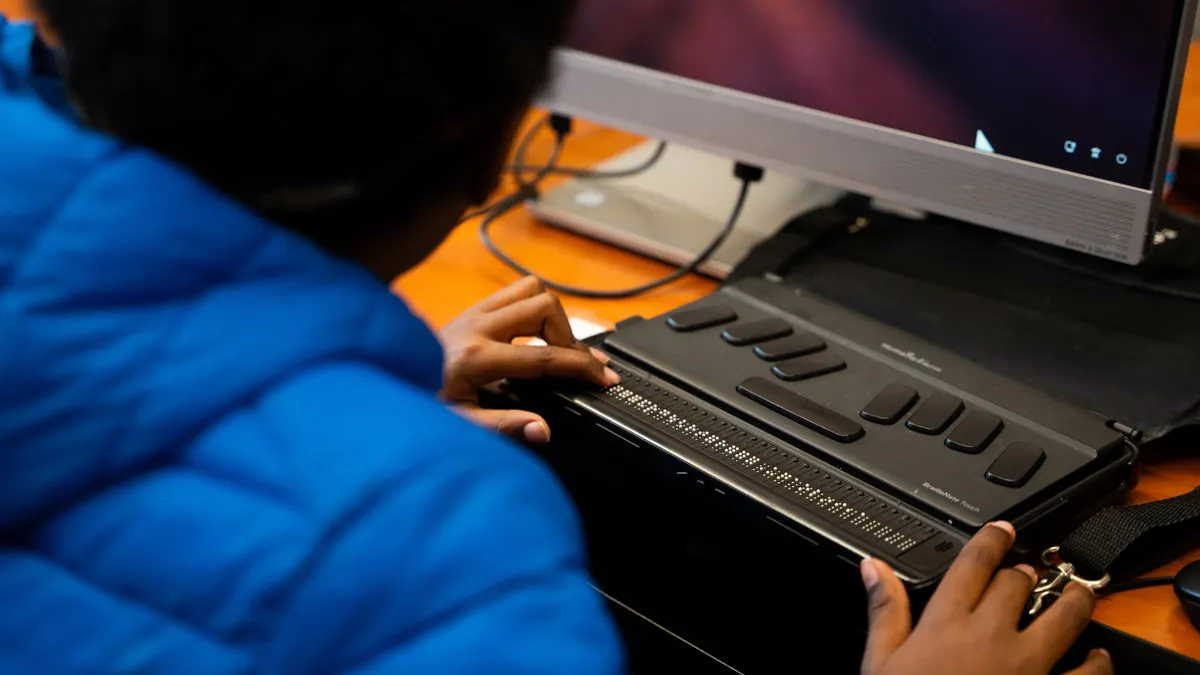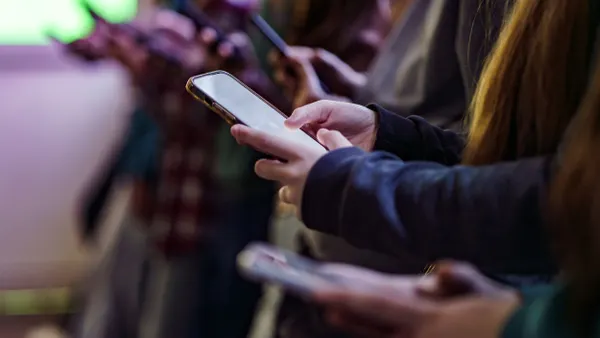Last school year, Elenisa Vasquez led a pilot initiative in the Laredo (Texas) Independent School District (LISD) to incorporate virtual reality (VR) technology into instruction for elementary and middle school students at two schools.
The program has been viewed as so successful that this year it expanded to include all 20 elementary schools and four middle schools. Each school has a classroom set of 20 RobotLAB VR devices preloaded with the Google Expeditions, Discovery and Cardboard Camera apps.
"My goal was to prove how well it can bolster the curriculum we already have," said Vasquez, a digital learning facilitator for LISD.
Even in kindergarten, students are strapping on headsets and using Expeditions to visit the San Diego Zoo after learning about animals. And in 2nd grade, a virtual trip to Antarctica followed a classroom lesson that included a nonfiction reading about penguins. As they became immersed in the penguins' environment, students used vocabulary words and terms they learned in the lesson, Vasquez said.
"It provided the children the chance to use that vocabulary in context," she said, adding that teachers are seeing improvements in writing as a result of the VR component. "They can write so much more now because they've been there."
Immersive media — now and in the future
Taking a class of 2nd-graders on a far-flung field trip to Antarctica is not likely to be in any school's budget. That's why a cost-prohibitive learning experience is one of the four situations, according to researchers, in which VR is an appropriate medium. The others are because something is impossible, such as breaking the laws of physics, too dangerous or counterproductive.
Exploring the growing use of VR and other immersive media in students' lives — both in and out of school — was the goal of a recent gathering of researchers, educators, pediatricians, software developers and other experts. Summarized in a new report, the event was held to discuss the positive use and potential risks of VR, augmented reality, mixed reality and cross reality — the latter of which combines the hardware and software of the other forms — before the technology becomes more widely available.
"Now is the time to individually and collectively ensure that when children engage with immersive media in their near and distant future, their experiences are positive, productive and safe," says the report from the Joan Ganz Cooney Center at Sesame Workshop, which organized the convening in partnership with Dubit, an agency that conducts research on how children behave in the digital world, and Arizona State University's Center for Science and the Imagination and School for the Future of Innovation in Society.
A message throughout the report is that experts don't yet know enough about how this technology affects a child's development. That's why manufacturers and software designers generally recommend their products for children over the age of 13, the report says.
"First, immersive media may be unsafe for children due to the cognitive load these types of media put on children's brains," the report says. "This is because the prefrontal cortex, which is connected to executive functions like impulse control and future thinking, is still developing for children until their mid- to late-20s."
Other potential concerns discussed at the event included security and privacy threats, and that the technology could widen the digital divide between families who can afford the systems and those who can't. There are also questions about how the senses that children normally use to explore their world — sight, touch, smell, etc. — might be simulated in a virtual context.
Sixty-percent of parents surveyed by Common Sense Media in 2017 responded that they were at least "somewhat concerned" that VR would have negative effects on their children's health. Some parents with 8- to 17-year-olds that had used VR reported that their children had bumped into something while using a headset (13%) or experienced dizziness (11%), headaches (10%) or strain on the eyes (8%).
'Small amounts'
In LISD, Vasquez said teachers make sure students are sitting down when using VR so they don't get disoriented. She's also heard a few questions from parents about how long children might be using the headsets, possibly because they are more familiar with VR in a gaming situation.
"The way we use it in education, it's not a static stream," Vasquez said. "We're integrating it, but it's in small amounts throughout the lesson."
Common Sense Media also recommends that the technology be used for minutes at a time, not hours.
At Scotts Ridge Middle School, in Ridgefield, Connecticut, Janine Johnson, the library media specialist, also advises students to start the experience by sitting down. Once they feel comfortable standing, they can turn and look up, down and around to get a "fully immersive experience," she said in an email.
She also gives students the option of viewing the content on an iPad, their Chromebooks or not at all. "We tell students that not everyone enjoys 360 experiences," she said.
'Not just consumers'
At the gathering last fall, participants also discussed multiple benefits for children and learning. In addition to traveling around the world and back in time, uses could include performing science experiments without expensive equipment or dangerous materials and developing empathy by taking someone else's perspective.
Some expressed the opinion that immersive media should not be another passive experience for children, and that, as with other technological advances, children should be "producers and not just consumers."
That's exactly what's happening at Scotts Ridge, where 7th-graders created a VR experience comparing a cell to a school. And Johnson recently worked with 6th-graders, who, as part of a social studies unit on globalization, are using Tour Creator to design a virtual tour of a country they have studied to feature as one part of a "stall" in a market.
"I think the teachers we collaborate with understand that VR is just one aspect of a larger lesson," Johnson said, "but kids enjoy it, and we find that they engage with the content differently when VR experiences are involved."
Future research, the report says, should focus on how immersive media affects children's vision and executive functions, how children relate to virtual characters, and "how they transfer information from inside these environments to the outside world." The participants also recommended that research target specific populations, such as low-income students and those with special needs, as a way to improve equitable access to the technology.
Vasquez finds the technology has been beneficial for English learners because it helps them to better relate to the content of the lesson.
"When they can see it, they understand it so much better," she said. "We're sticking to the curriculum and taking it to another level with the VR. That really grounds us."





 Dive Awards
Dive Awards













